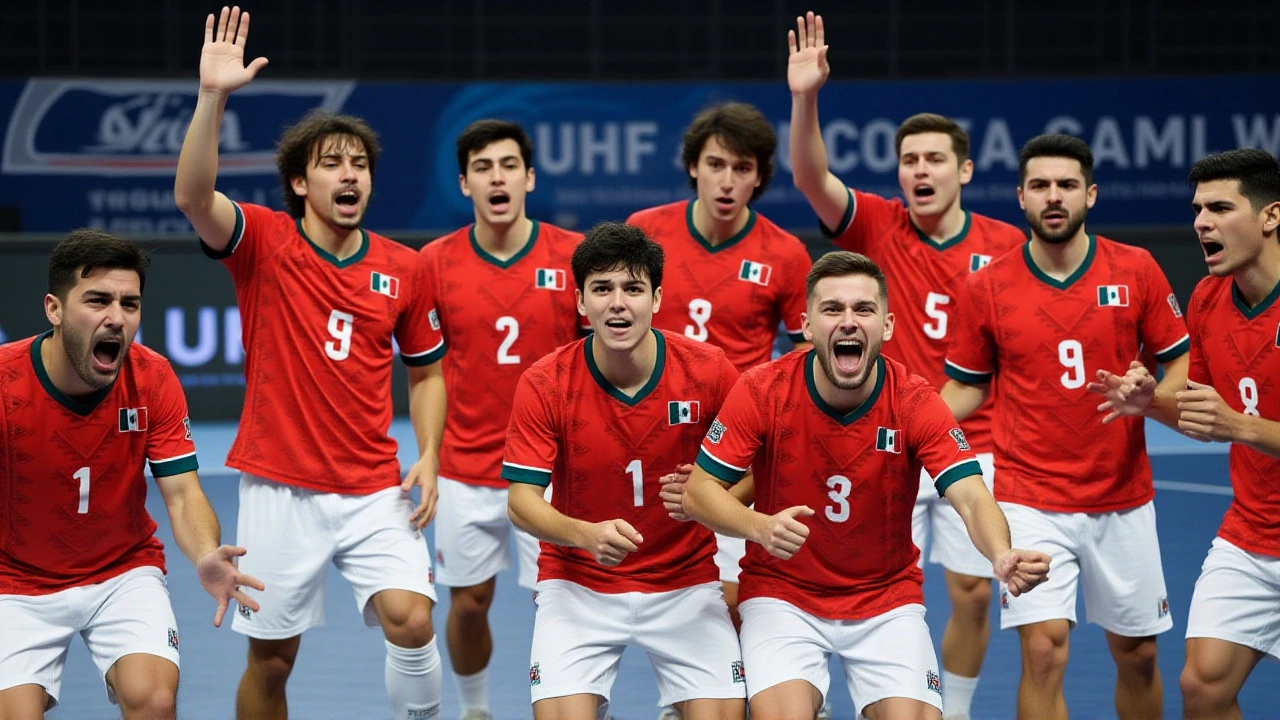It wasn't the result either team wanted, but it might have been the one they needed. On Saturday, November 15, 2025, Estadio Corona in Torreón, Coahuila, hosted a tense, goalless draw between Mexico and Uruguay — a 0-0 final that stretched to 90'+5' minutes, capped by a last-gasp save from Uruguay’s goalkeeper Santiago Mele. The match, part of Mexico’s final push before the 2026 FIFA World Cup, served as a brutal stress test for a young, rebuilding squad facing one of CONMEBOL’s most disciplined teams.
What Happened on the Pitch?
The game was a masterclass in defensive discipline. Neither side could break through despite a flurry of chances. Mexico’s best opportunity came in the dying moments: a powerful header from Johan Vásquez (jersey #5), assisted by Gilberto Mora, was punched away by Mele in the 90'+5' minute — a save that echoed through the stands like a thunderclap. Uruguay, meanwhile, spent long stretches soaking up pressure, relying on counterattacks and the composure of their backline. There were no red cards, no penalties, and only two yellow cards total — a sign of the match’s controlled intensity. Mexico’s starting XI featured a blend of youth and experience: Rangel (12), Gallardo (23), Vásquez (5), Montes (3), Reyes (15), Ruiz (14), Álvarez (4), Sánchez (18), Lozano (22), Jiménez (9), and Alvarado (25). Substitutes included goalkeeper Ángel Malagón and midfielder Alexis Gutierrez, both brought on in the final 20 minutes to inject fresh legs.Why This Match Mattered
For Mexico, this was about more than points. It was about identity. With veteran players like Hirving Lozano and Raúl Jiménez still in the mix, the team is in transition — trying to blend the grit of past squads with the creativity of a new generation. CBS Sports called it “the stiffest test” for Mexico’s youth-focused side. And they weren’t wrong. Uruguay, ranked inside FIFA’s top 30, didn’t come to play nice. They came to win — and when they couldn’t, they came to frustrate. The 2026 FIFA World Cup is just months away, and Mexico’s coach needs to know: Can this group hold up under pressure? Can they create chances against compact defenses? The answer, on this night, was: not quite. But the resilience? That was there. And sometimes, that’s more valuable than a goal.A History of Dominance — But Not This Time
The scoreboard might have been blank, but the ghosts of past matches haunted the pitch. Since March 6, 2022, Uruguay has beaten Mexico in both of their international friendlies — including a devastating 4-0 win on June 5, 2024, at Empower Field at Mile High in Denver. Darwin Núñez scored three that night; Facundo Pellistri added the fourth. Mexico didn’t manage a single shot on target. That loss still lingers in locker rooms from Mexico City to Monterrey. So Saturday’s 0-0 draw? It felt like progress. Not victory, but a refusal to be broken. Even when Uruguay pressed high in the 79th minute, even when Mele made that final save, Mexico didn’t fold. That’s something.
How Fans Watched Around the World
The match was broadcast widely — and not just because of the rivalry. In Mexico, viewers tuned into TUDN En Vivo, ViX, and Azteca Deportes En Vivo. In Uruguay, AUF TV and DIRECTV Sports Uruguay carried the game. In the U.S., fans had their pick: fuboTV, FOX Deportes, Univision NOW, and the TUDN App. JustWatch confirmed ViX was available across Central America — from Costa Rica to Panama. And for those who wanted to watch with strangers, the YouTube channel DeadBall TV hosted a live watch-along, uploading promotional content two days before kickoff.What’s Next?
Mexico’s next test comes in early December — a friendly against a yet-to-be-announced European side, likely in the U.S. The coaching staff will study this match closely: Was the midfield too passive? Did the wingers create enough width? And most importantly — can the defense hold up against elite strikers? For Uruguay, the draw was a chance to rest key players without losing ground. Their focus now shifts to Copa América qualifiers, where they’ll face Brazil and Argentina in high-stakes clashes. This match was a checkpoint — not a destination.
Why Estadio Corona?
Choosing Estadio Corona wasn’t random. With a 30,000-seat capacity and a reputation for electric crowds, it’s one of Mexico’s most intimate national team venues. Unlike the massive Estadio Azteca, it doesn’t feel like a spectacle — it feels like a battle. The stands are close. The noise is raw. And on this night, it was the perfect stage for a gritty, goalless draw that said more than any scoreboard ever could.Frequently Asked Questions
Why did Mexico and Uruguay play a 0-0 draw instead of a competitive match?
This was an international friendly — a non-competitive match used by national teams to test tactics, evaluate younger players, and prepare for upcoming tournaments like the 2026 FIFA World Cup. No ranking points or qualifying implications were at stake. The focus was on performance, not results — making the 0-0 draw a strategic outcome for both sides.
How does this result affect Mexico’s World Cup chances?
While the draw doesn’t change Mexico’s group position (that’s decided in qualifiers), it revealed real concerns: lack of cutting edge in the final third and overreliance on individual moments. But the team’s defensive resilience against a top-30 side like Uruguay is encouraging. Coaches will use this as a blueprint for training — especially in set-piece defense and transition play.
What’s the significance of Santiago Mele’s last-minute save?
Mele’s stoppage-time save wasn’t just a highlight — it was symbolic. Uruguay’s entire strategy was built on patience, and that moment sealed their ability to hold firm under pressure. For Mexico, it underscored how close they came to breaking through. In tight games like this, one save can define momentum — and it’s likely to be replayed in Uruguay’s training sessions for weeks.
Why does Uruguay keep beating Mexico in friendlies?
Since 2022, Uruguay has won both meetings — including a 4-0 thrashing in Denver in 2024. Their physicality, disciplined structure, and clinical finishing have consistently outclassed Mexico’s more fluid but less efficient approach. Mexico’s youth-heavy lineup lacks the experience to exploit gaps, while Uruguay’s veterans know how to grind out results — even without dominating possession.
Where can I watch future Mexico vs. Uruguay matches?
Future matchups will likely be broadcast through the same platforms: TUDN and ViX in Mexico, AUF TV in Uruguay, and fuboTV or FOX Deportes in the U.S. For international fans, FIFA+ often streams friendlies. Always check official team websites and broadcasters for last-minute changes — streaming rights can shift quickly, especially with the 2026 World Cup approaching.
What’s the difference between Estadio Corona and Empower Field at Mile High?
Estadio Corona is a soccer-specific stadium in Torreón, Mexico, with a 30,000-seat capacity designed for intense, intimate atmospheres. Empower Field at Mile High in Denver is a multi-purpose NFL stadium with over 76,000 seats — more suited for big-ticket events. The smaller venue amplified the tension in this friendly, while the 2024 4-0 loss in Denver felt like a spectacle — not a battle.
